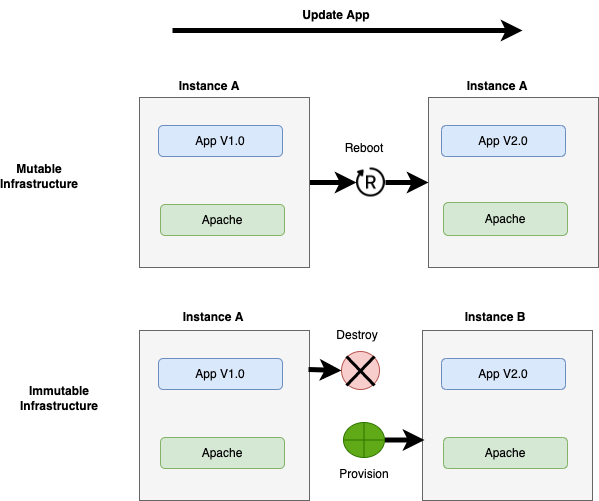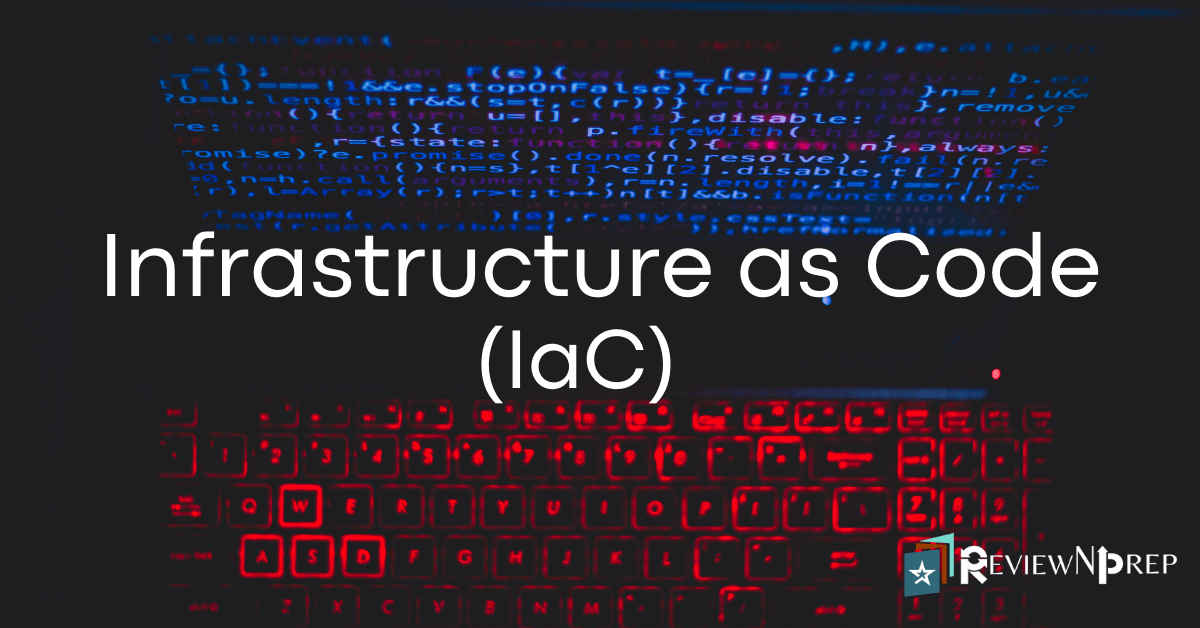|
|
Introduction
Infrastructure as code (IaC) is a software development methodology that allows the automatic management of software-defined infrastructure. Infrastructure as Code allows developers to generate any infrastructure component they need, including operating systems, networks, virtual machines (VM), containers, load balancers, storage, databases, and connection types.
In this blog we will dive into what is IaC, benefits of IaC, how to use IaC and few other important IaC concepts.
So, let’s get started!
What Is IaC?
In the good old days of making a software, setting up a test or production environment was not a seamless process. System Administrator would setup up a physical server, database administrator would do the same process for database. This would be followed by the software developer delivering the code by copying it to the test machine, and the test team would run several operational and compliance tests. A lot of touch points, human errors, triaging, resulting in delayed software delivery.
Infrastructure as a code (IaC) is a software development process, practice and toolset that automates the management of infrastructure components such as servers, networks, and applications. Infrastructure as a code can be used to improve reliability, manageability, and maintainability of systems by following the same versioning as DevOps team uses for source code.
Related Blog: Basics of DevOps
What Are The Benefits of IaC?
There are several benefits of using IaC:
1. Improved Consistency: IaC can improve consistency and reliability by automating the management and deployment of infrastructure components. IaC ensures there are no configuration drifts, a situation in which development, test, and deployment environments develop unique settings due to frequent manual configurations. IaC reduces the need for manual intervention, which can lead to improved reliability.
2. Efficient Development: The DevSecOps model through the use of continuous integration/continuous deployment (CI/CD) environments leads to an accelerated software delivery. QA can quickly provision full-fidelity test environments. IaC can optimize application performance by automating the provisioning and management of infrastructure components. The developers can quickly go back to a previous configuration or redeploy an environment if they run into a problem. The end result is an efficient development lifecycle.
3. Speed To Market: Companies that use IaC spend less time on manual processes, getting more done in less time. It allows development team to write and execute instructions for compute, storage and network requirements, and thus provision them more quickly than would be possible via a manual process. Developers can provision infrastructure for development, testing, and production along with scaling or tearing down production infrastructure, with a click of a button. The end result is lower time to market.
4. Lower Cost: IaC lets organizations take maximum advantage of the cloud computing consumption-based cost structure. Environments can be created and teared down quickly. If used efficiently, companies only pay for the resources they use, so there is no unnecessary overhead.
5. Accountability: IaC is managed via configuration files that can be versioned like any other source code file. The impact of each configuration is transparent that helps with accountability for what’s working and what’s not.
What Is the Best Way to Implement IaC?
There is no one-size-fits-all answer to this question, as the best way to implement IaC will vary depending on the specific needs of your organization. However, some tips on how to best implement IaC in your organization include:
1. Considering Your Overall Infrastructure Strategy: Before you begin implementing IaC, it is important to have a clear understanding of your overall infrastructure strategy. This will help you determine which components of your infrastructure need to be automated and which should remain manual.
2. Defining Your Infrastructure Components: Once you know which components of your infrastructure need to be automated, you need to define those components. This will help you identify the specific tasks that need to be automated. During this process, pay attention to Mutable or Immutable infrastructure (discussed below).
3. Planning and Implementing Automation: Once you have defined your infrastructure components and determined which tasks need to be automated, it is important to plan and implement the automation. This will ensure that the automation is effective and reliable. You can choose between declarative or imperative approaches (discussed below) to creating your components.
4. Monitoring and Maintenance: After implementing automation, it is important to monitor and maintain the system. This will ensure that the automation remains effective and reliable.
What Is Immutable Infrastructure vs Mutable Infrastructure?

Based on your use case, the infrastructure provisioned can be immutable or mutable.
Mutable infrastructure is infrastructure that can be modified or updated after it is originally provisioned. Mutable infrastructure gives development teams the flexibility to make ad hoc server customizations to address changing development process, application requirements or respond to an emergent security issue.
Immutable infrastructure is infrastructure that cannot be modified once originally provisioned. If immutable infrastructure needs to be changed, it has to be replaced with new infrastructure.
What Is Declarative vs Imperative Approaches To IaC?
Based on the tools that you choose for automation, there are 2 ways to approach IaC—declarative or imperative.
Tools with a declarative approach defines the desired state of the system, including what resources you need and any properties they should have.
A declarative approach also keeps a list of the current state of your system objects, which makes not only spinning up new resources but also taking down the infrastructure simpler to manage.
An imperative approach instead defines the specific commands needed to achieve the desired configuration, and those commands then need to be executed in the correct order. The imperative approach is also known as the procedural approach.
In the imperative approach, the responsibility of defining the exact steps necessary to meet an end goal is with the user.
How Can I Get Started With IaC?
Automation tools that promote the IaC best practices are necessary to make the process of building and configuring the infrastructure more competitive and effective, reducing the costs and effort involved. There are a lot of popular paid and open sourced IaC and configuration management tools that the developers can use.
- Terraform: This open-source declarative tool offers pre-written modules that you populate with parameters to build and manage your IaC environment. Beauty of Terraform is that it is independent of any cloud provider.
- Puppet: Puppet uses Ruby-based DSL to define the desired state of the infrastructure, and the tool automatically creates the environment.
- Ansible: Ansible enables you to model the infrastructure by describing how the components and systems relate to one another.
- Chef: Chef is by far the most popular imperative tool on the market to be easily integrated into DevOps practices. Chef allows users to make “recipes” and “cookbooks” using its Ruby-based DSL.
- AWS CloudFormation: CloudFormation allows you to model your entire cloud environment in text files. You can use open-source declarative languages, such as JSON or YAML, to describe what AWS resources you want to create and configure.
Conclusion
With the help of IaC tools, DevOps teams can quickly provision different environments using the same configuration and manage the entire lifecycle of your desired infrastructure, thus reducing human error and delivering code faster.
Infrastructure as a code is the way to go about to automate your infrastructure.
Author: Haman Sharma is a technology enthusiast. You can connect with him on LinkedIn.
Further Reading: Agile, DevOps, CI/CD – How are they related?

